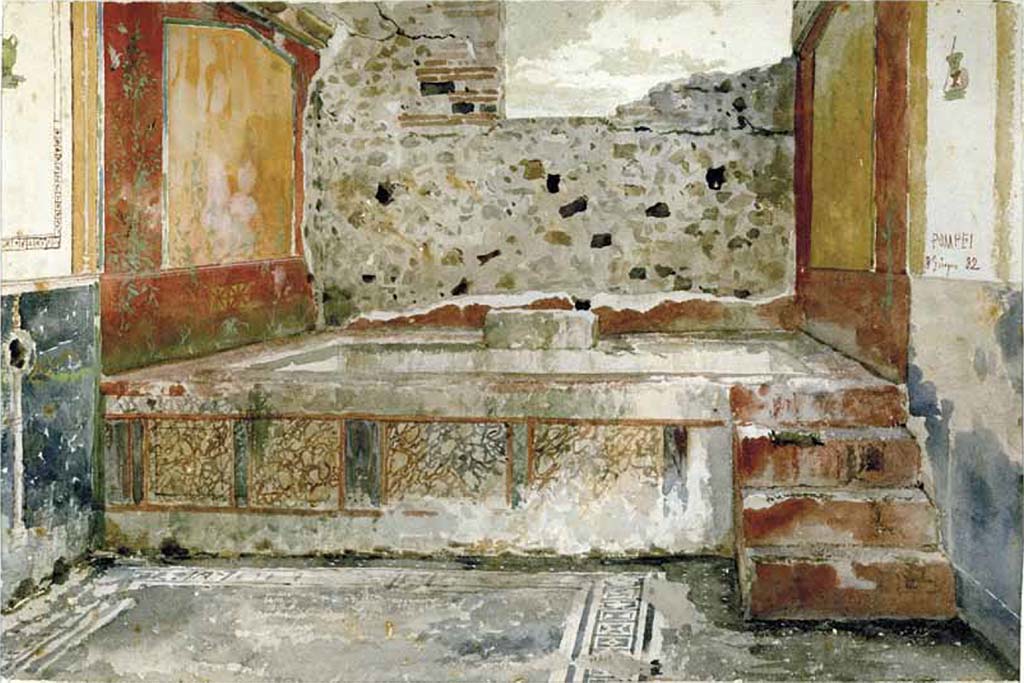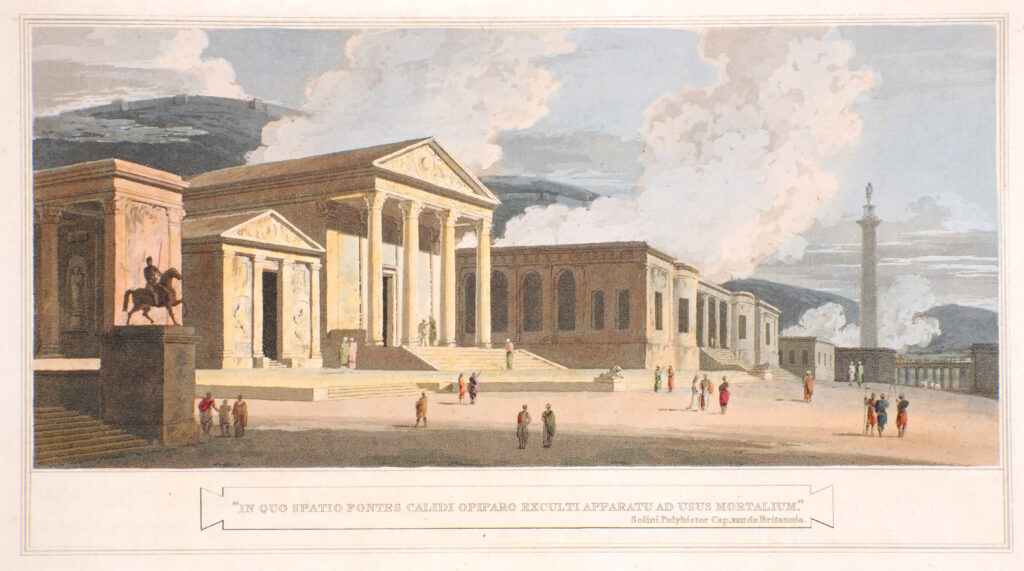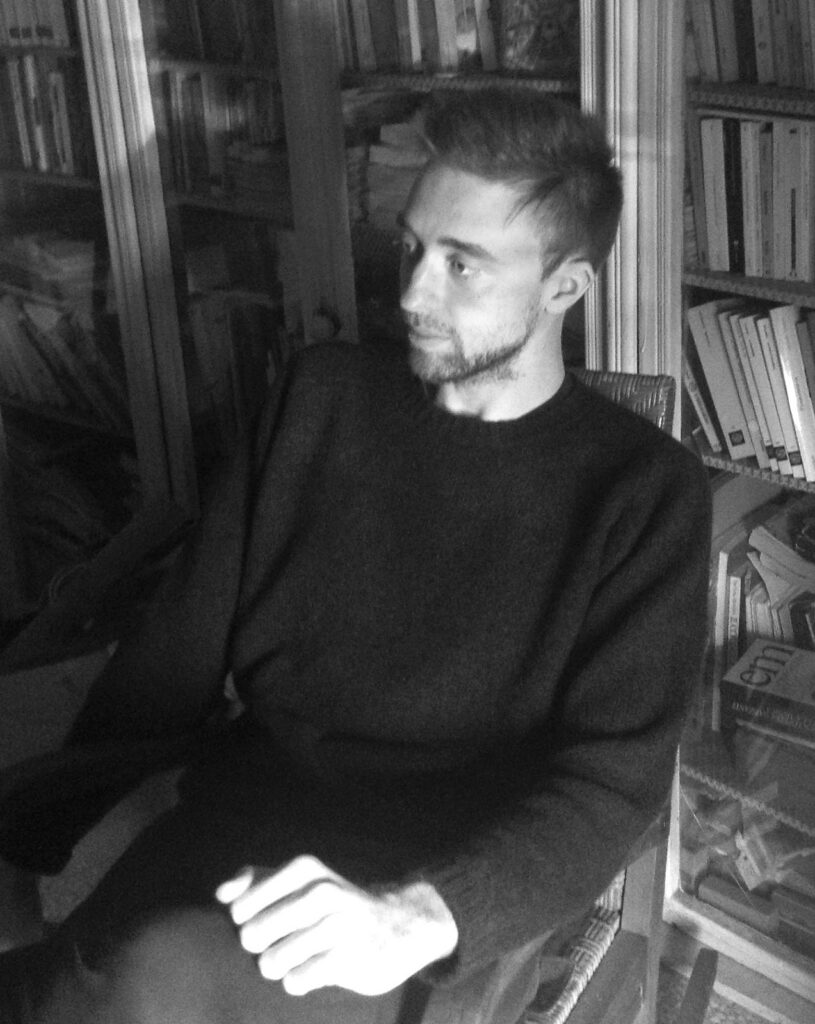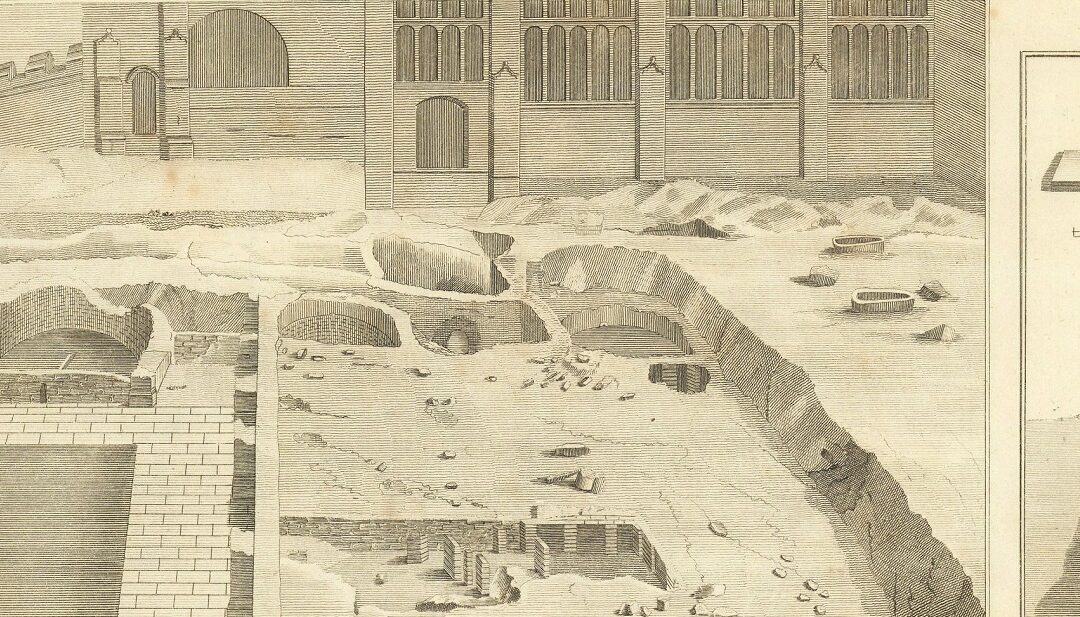In this blog post, we meet Dr Giacomo Savani, an expert in Roman baths and ancient senses, recently appointed as the Bibliography of British and Irish History (BBIH) section editor for Roman Britain.
My name is Dr Giacomo Savani, and I’m the new editor for the Roman Britain section of the Bibliography of British and Irish History (BBIH). I’m a Roman archaeologist by training and a specialist in ancient bathing. Baths were essential facilities in antiquity and were common in cities, small towns, military outposts, and villas. People with very different cultural and social backgrounds shared a love for bathing, as demonstrated by epigraphic and literary sources from all over the Roman world. One of my favourites is a funeral inscription from Rome dating to the 1st century AD, where we read that baths, together with wine and sex, ruin our bodies, but, at the same time, are the pleasures that vitam faciunt—‘make life worth living’.

My first contact with Roman baths dates to 2009 when, as an MA student, I collaborated with the ‘Vesuviana Project’ at the University of Bologna. My team recorded the rooms of the Casa del Centenario in Pompeii, and I was assigned to the beautiful private baths of this complex (see image above). My PhD project at the School of Archaeology and Ancient History, University of Leicester (2012–17) looked at the social function of rural baths in Roman Britain. I am currently transforming my thesis into a book for Routledge, Rural Baths in Roman Britain: A Colonisation of the Senses, forthcoming in 2024. Building on Yannis Hamilakis’ concept of ‘sensorial assemblage’, the book addresses the role of memories, feelings, and sensory experiences associated with rural baths in the process of cultural change promoted by Rome in Britain.
A chapter of the book looks at the rediscovery of Roman baths and spas in Georgian and Victorian Britain, where I highlight the interest shown for these buildings and their properties by antiquarians and physicians alike (see image below). For instance, the famous antiquarian William Stukeley (1687–1765) celebrated in his Itinerarium curiosum the ‘incomparable invention’ of the hypocaust, the underfloor heating systems of the baths. In his treaty Of the Gout, he also praises the Roman habit of ‘dayly bathing and oyling’, regretting that this practice was not reintroduced ‘among all the refin’d politeness of our age’.

The original research carried out for this chapter encouraged me to develop the project The Reception of Roman Baths in Early Modern Europe, funded by an Irish Research Council Postdoctoral Fellowship (2019–22). In a series of articles written before and during this project, I assessed the nature and extent of intellectual networks between Italian, French, and British physicians, architects, artists, and antiquarians dealing with baths during the 16th and 18th centuries. My current project, Women and Baths in Ancient and Early Modern Medicine, funded by a Royal Society of Edinburgh Saltire Early Career Fellowship (2022–23), continues my research on ancient and modern thermal bathing but shifts the focus to the female body, assessing the importance of balneology in ancient gynaecological texts and their influence on early modern treatises. If you’re interested, I discuss my research in a podcast series entitled The Sustainable Past, which I created with my colleague Dr Patty Baker (season 1; season 2).
The BBIH has been an essential tool during the research for my PhD thesis, my articles, and, now, for my book. Since completing my PhD in 2017, hundreds of relevant publications on Roman Britain have appeared. Without the BBIH’s reliable research tool, keeping my bibliography up to date would have been impossible. It is, therefore, an honour and a great pleasure for me to make my small contribution to such a monumental and valuable endeavour.

Dr Giacomo Savani is a Royal Society of Edinburgh Saltire Early Career Fellow at the School of Classics, University of St Andrews. He works on Roman social and cultural history, ancient senses, ancient environments, and the reception of antiquity in early modern Europe. His book Rural Baths in Roman Britain: A Colonisation of the Senses is forthcoming with Routledge in 2024.
Twitter: https://twitter.com/GiacomoSavani

